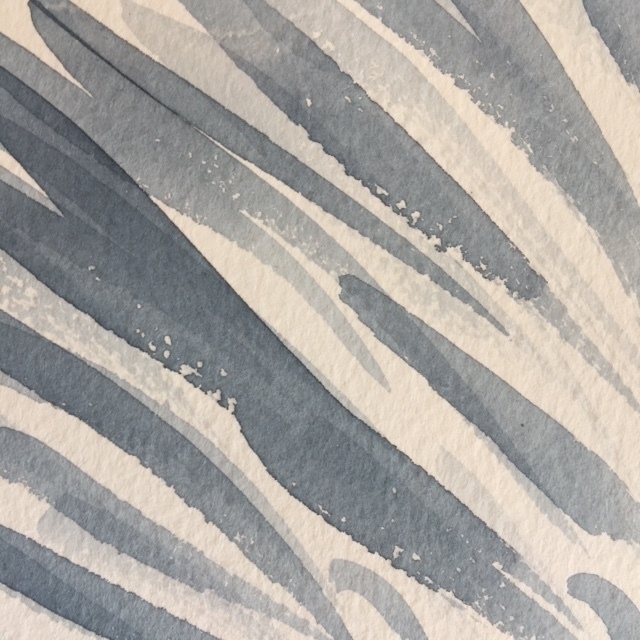"I don't have to lay on the couch and see a therapist because my therapist is in my paint brushes." Abbey Lincoln
I'm not sure if that is 100% true but these are the therapy brushes I use in watercolor. And yes, there is a straw in there too. At this point I do not own high-end expensive brushes. Most of mine are Golden Fleece from Cheap Joe's. They are affordable and they get the job done.
What Kinds of Brushes Do I Need?
I first began investing in higher quality paper, then paint and hopefully one day, I'll add fancy brushes to that list. If you are starting out in watercolor, I recommend a small, medium and large round. A one inch flat brush and a bigger or a mop brush for wetting large areas of paper. I also have a few scrubber brushes. Sometimes you can use these scrubber brushes to lift color or pull out mistakes, but very carefully or they will tear the paper. In regards to detailed work, you don't necessarily need a teeny tiny brush. The round brushes make a sharp point that work nicely for details.
20 Techniques to Try
These brushes, a sponge, salt and bleach can create some magic. Here are a 20 strokes and effects achievable through watercolor. I intentionally used a monochromatic palette so that the transparency of the watercolor is evident. Let the water, the drying process and patience do most of the work for you. Each layer should dry before adding another.
Watercolor requires very little paint. A pool of water with a touch of pigment goes a long way. Both in regards to the painting at hand but also perhaps for that therapy as well. :-)




















